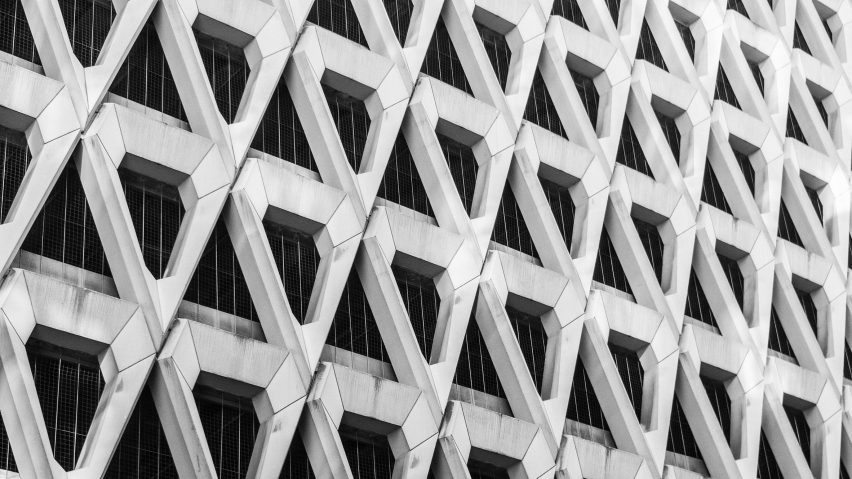Some of the world's best known brutalist buildings have been turned into wallpaper designs, including a London car park that is threatened with demolition and Rio de Janeiro's Mayan-inspired cathedral.
The Brutalist Architecture collection by British company Murals Wallpaper features close-up details from five celebrated brutalist buildings, including the distinctive diamond-patterned facade of Welbeck Street car park and the modular walls of the Edgar Fonceca-designed Cathedral of Saint Sebastian.
Also included in the concrete-themed collection is: the vaulted ceiling of Washington DC's brutalist metro system designed by architect Harry Weese, which opened in 1976; the facade of the Pinnacle Building (formerly West Riding House), which was built in Leeds in 1972; and London's Portland House, which was completed in 1963.
Priced at £36 per square metre, the wallpapers have been produced in response to a large amount of controversy generated in the past year by the treatment of various brutalist buildings.
"With the controversial demolition of the famous Robin Hood Gardens estate in London in December, fascination with brutalist style architecture has returned to the spotlight," said the brand. "Love it or hate it, it is certainly a conversation starter."
News that Westminister Council had approved the demolition of London's Welbeck Street car park last year was met with outrage and dismay by fans of the 20th-century architectural style.
If plans go ahead, the car park designed by Michael Blampied and Partners in 1971 will be demolished to make way for a 10-storey hotel designed by Eric Parry Architects.
Since the announcement, architecture firm JAA has developed a speculative scheme that would allow for the development of a new hotel while preserving the car park's celebrated pre-fab facade.
"We think that buildings of this ilk are too readily demolished nowadays under the illusion that new is automatically better than existing," JAA founder Jenny Fleming told Dezeen.
Catherine Croft, director of heritage body the Twentieth Century Society, which is supporting JAA's scheme added: "We have to get away from this short-termism of 'out with the old and in with the new’ and come up with more imaginative solutions which will allow us to adapt and retain these important buildings."
"They are a valuable legacy which adds to the richness of the fabric of our architectural heritage and the best examples should be safeguarded for future generations," Croft continued.
Also in London, despite years of campaigning from architects and heritage bodies, demolition began last month on Robin Hood Gardens, the post-war housing estate in east London designed by exponents of new brutalism, Alison and Peter Smithson. The 1970s estate will make way for a much denser housing development.
Meanwhile, in Sydney one of the city's finest examples of brutalist architecture has been put on sale for £75 million by the New South Wales government, despite new evidence that shows the building may already be heritage listed.
The decision to sell the Sirius building comes after the New South Wales (NSW) government decided to not include it on the State Heritage Register, leaving the site open to the threat of demolition.

